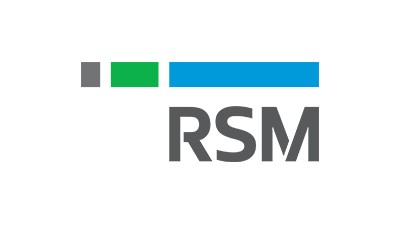Opportunity Zone Investors Can’t Forget About Local Tax Incentives

Commercial real estate is still grappling with opportunity zones — and rightfully so. With more than 8,700 zones stretching across dense cities and rural fields in all 50 states, the program is geographically vast and technically complex. Adding a further wrinkle to the landscape is a web of state and local tax programs, which offer developers incentives, but only as long as they know how to take advantage of them.
To make opportunity zone projects as financially viable as possible, developers need to consider state and local tax credits beyond incentives for qualified opportunity zones. Numerous programs offer developers tax abatements, deferrals and incentives in the same economically distressed areas as QOZs. These extra incentives will make opportunity zone projects more attractive to investors and may bring new capital deeper into the areas that need it most.
“The purpose of incentives is never to make a bad project look good, it’s to make a good project better,” RSM Credits and Incentives Senior Manager Debbie Singer said. “These additional incentives will make a difference for community-minded projects like green buildings and affordable housing developments and for groups like REITs that are concerned with the cost of projects.”
Prolific developers should already know about these additional incentives, Singer said. But many of the programs have been overshadowed by opportunity zones. Newer developers may not be aware of how neatly these programs dovetail with QOZs.
Here is a look at some of the most important local incentives:
1. New Markets Tax Credits
NMTC incentives take the form of forgivable loans, which are added to an investment’s capital stack. They can reduce the overall investment a project needs by 39%. After seven years, the loan is forgiven, resulting in a back-end benefit for the project.
The synergies with opportunity zones are strong: NMTC loans are available in severely distressed economic areas, which often overlap with QOZs. And since the full tax deferral of a QOZ fund only kicks in after 10 years, a seven-year loan is not a roadblock.
“Many great projects struggle to get off the ground because of upfront funding,” Singer said. “NMTC loans can be put towards almost anything — real estate, equipment and even operating costs. So they can benefit for-profit and not-for-profit enterprises.”
2. Tax Increment Financing
Municipalities can offer developments abatement on their property taxes through TIFs — effectively reimbursing companies for a portion of their investment. TIF has a long history of use in distressed and wealthy areas across the nation.
“Depending on the project, TIF incentives could outweigh opportunity zone incentives,” Singer said. “Opportunity zones offer tax deferral, but you’re still paying taxes on about 85% of your capital gains. But in theory, a municipality could offer reimbursement for 100% of the tax increment generated by your project. That can add up to hundreds of thousands, if not millions of dollars, over the incentive period.”
TIF does require the cooperation of a municipality. To take full advantage of TIFs, developers should build strong relationships with local governments.
3. State Job Credits And Work Opportunity Tax Credits
Many states offer incentives to companies that create or retain jobs, and the federal government offers tax credits to companies that hire lower-income employees. These programs could be especially attractive to retail or industrial developments deep within distressed tracts. But while they can create serious savings, job credits should not factor into what projects developers choose to undertake.
"A retail center might create more jobs than an office building, but I don’t expect that a developer would change the project that they are planning just to take advantage of job credits," Singer said.
4. In-Kind Contributions
Municipalities can contribute land, infrastructure improvements, goods or even advertising to promote new projects. Similar to TIFs, these sorts of contributions often require negotiations and strong relationships with local governing bodies. In-kind contributions could make a large difference in rural opportunity zones, where land cost may be the deciding factor in a deal.
Who This Matters For
A single investor in a qualified opportunity fund may not be concerned with the overall cost of a project — they will only be concerned with the returns on their stake. But developers or fund managers can make QOZ projects more appealing to investors by saving hundreds of thousands of dollars through state and local tax incentives.
REITs and developers can use these incentives to lower the operational cost of their projects. Having less costly projects allows them to take on new projects and keep their pipelines full.
Potential Concerns
Critics have suggested that tax incentive programs give tax breaks to developers on projects they would have pursued anyway. There has been backlash over the tax break New York City offered Amazon in the HQ2 process, considering that Amazon will be constructing its office in an opportunity zone. Boulder, Colorado, became the first city to reject its own opportunity zones, citing a slew of projects that residents don’t want.
But Singer thinks critiques and NIMBYism don’t outweigh the altruistic heart of the opportunity zone program.
“QOZs were designed to work in tandem with state and local tax incentives,” Singer said. “When you’re looking for credits, there are always going to be detractors to what you’re doing. But the goal of the program is good — bringing capital to areas that have been overlooked for years, and expanding opportunities for people who live there.”
This feature was produced in collaboration between Bisnow Branded Content and RSM. Bisnow news staff was not involved in the production of this content.

